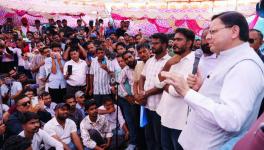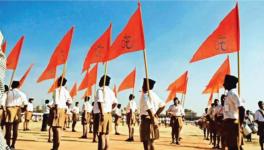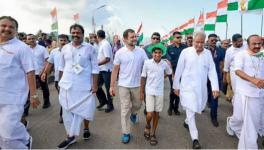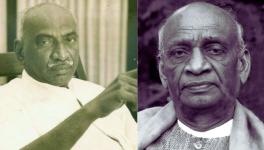Elections 2019: A Review of Alliances in the Northeast
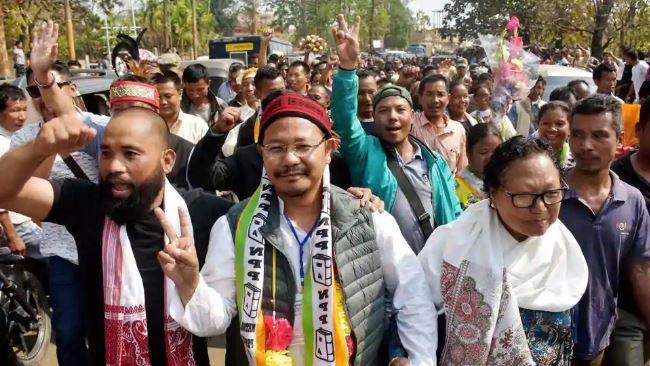
The past five years have been a rollercoaster ride for the Northeast. For the first time, the Congress is not in power in any of the assemblies of any state. The Bharatiya Janata Party (BJP) has been able to secure a presence in the seven assemblies for the first time as well. This is of course notwithstanding the fact that the Congress and its allies have more members from the Northeast in Lok Sabha. Some of the issues that raised emotions and tensions in the region were: the Indo-Naga deal, the Citizenship Amendment Bill (CAB), the National Register of Citizens (NRC), as well as multiple demands for statehood, federal autonomy and the coveted Scheduled Tribe (ST) status.
Among all of the BJP’s allies, only the Asom Gana Parishad (AGP) and the United Democratic Party (UDP) from Meghalaya have pulled out, and that too at the eleventh hour on the CAB issue. Despite other alliances still standing on paper, it seems that several of the saffron party’s allies wish to test the waters alone. Perhaps, post-poll alliances may occur, but at present, everybody will be running their own race. In the case of Arunachal Pradesh and Sikkim, the election will primarily be fought on local issues since both Lok Sabha and assembly elections will be held together.
Also Read | Farce to Tragedy to Farce: Timeline of the PRC Issue
Arunachal Pradesh
The BJP won a seat from Arunachal Pradesh West constituency with Kiren Rijiju becoming the minister of state for home affairs. The other seat, Arunachal Pradesh East, went to Ninong Ering of the Congress. In January 2016, through a controversial decision, the governor of Arunachal Pradesh dissolved the Nabam Tuki-led Congress government in the state. The state then witnessed a game of musical chairs as legislators jumped ship, and joined the Peoples Party of Arunachal (PPA) under the leadership of Kalikho Pul. Following the Supreme Court ruling in July that the government should not have been dismissed, Tuki was reinstated. However, he resigned in favour of Pema Khandu who then joined the PPA with the defecting members in September, until finally settling on the BJP in December. In the course of these travels, Kalikho Pul committed suicide by hanging.
The new BJP government under Pema Khandu, son of former Congress Chief Minister Dorjee Khandu, witnessed a fairly uneventful term. However, the inept handling of the Permanent Resident Certificate (PRC) issue saw Itanagar and Naharlagan go up in flames. Ironically, no violence was reported from the districts where the PRC was intended to be granted to certain communities. This has resulted in a growing demand among opposition parties for Khandu and his deputy, Chowna Mein, to resign. Khandu, for his part, has ordered a probe into the violence, however, it is unlikely that the probe report will ever be looked into.
Also Read | Will the BJP forsake the Northeast to Win West Bengal in 2019?
The state government was clearly all thumbs about the PRC issue. Both the chief minister and the deputy chief minister’s statements which led to resentment and anger among the Arunachal Pradesh Scheduled Tribe (APST) communities were clearly aimed at securing the votes of the non-APST communities who were promised PRCs. Following the violence in the capital, the public’s perception seems to have gone against the BJP and anybody seen allied with them. In this mayhem, the Conrad Sangma-led National Peoples Party (NPP) may be able to fill the political void. Though unreported, election expenses are ridiculously high in Arunachal Pradesh, the NPP has gained goodwill in several Northeastern states due to it being seen at the forefront against the CAB. Whether this will translate into votes in Arunachal Pradesh is uncertain, however, the NPP is clearly going to fight alone.
Assam
Assam had a most stressful five years since 2014. On the one hand, the NRC update had the potential to dive the state into chaos. However, unlike what doomsday prophets predicted, it was the CAB which almost vitiated the respite from armed politics that the state experienced since the 2010s. However, the BJP has been able to capitalise on the absence of a credible political party in the state. This is notwithstanding the fact that the BJP’s dealmaker, Himanta Biswa Sarma, is himself accused of indulging in corruption when he was a part of the previous Tarun Gogoi-led Congress government. In Assam, the BJP has seven Lok Sabha seats. The Congress has three, the All India United Democratic Front (AIUDF) has three and one seat is occupied by and independent candidate, Naba Kumar Sarania.
Also Read | Nellie 1983 Revisited: Victims Say They Had Been Barricaded for 6 Months Before the Massacre
Unlike in Nagaland and Manipur, where talks with political armed groups seem to keep civil society on its toes, in Assam, the United Liberation Front of Assam (Progressive) (ULFA(P)) as well as the various factions of the National Democratic Front for Bodoland (NDFB) and other smaller armed groups do not feature much in the political discourse. Anup Chetia, Mrinal Hazarika and Jiten Dutta did voice their views on the CAB. Hazarika and Dutta were temporarily arrested for their views, but were quickly released since there was little evidence of wrongdoing.
The Asom Gana Parishad (AGP) had been threatening to pull out of its alliance with the BJP in the state over the CAB. Finally, once the Bill was passed by the Lok Sabha, the AGP quit. However, it was Conrad Sangma who stole the show. What is interesting is that the NPP has opened its party unit in Assam, hence signalling its intent to contest the Lok Sabha polls. Considering the hero’s welcome that NPP president Conrad Sangma received at Lokpriya Gopinath Bordoloi airport in Guwahati following the CAB’s lapse, it may not be too farfetched to imagine the party gaining at least one seat in its debut.
Also Read | BJP’s Politics in Assam Post-CAB: Communal Division, Aberration of Facts
Manipur
Though levels of violence owing to armed politics has seen a steady decline in Manipur, the June 2015 ambush on the Dogra Regiment staged by the United Liberation Front of Western South East Asia (UNLFW) sent a shockwave through the security establishment. Since then, occasional improvised explosive devices (IED) and grenade attacks have persisted. Civil society, on the other hand, has forced the state government led by the BJP to sit up on various issues. The Manipur University imbroglio was a signal that the students and faculty members were unimpressed by Hindutva appointees. Journalist Wangkhem Kishorechand was detained under the National Security Act (NSA) for voicing his views (in unparliamentary language) against the BJP on social media. Then the unrest over the CAB resulted in the arrest of Thokchom Veewon, an advisor to the Manipur Students Association Delhi.
In Manipur, both the Lok Sabha seats are held by the Congress. Whereas, the state government is made up of a coalition of the BJP, NPP, Naga Peoples Front (NPF), Lok Janshakti Party (LJP) and an Independent. It is likely that the Congress will not be able to retain its Lok Sabha seats. However, who will occupy them is anybody’s guess.
Also Read | MSAD Advisor Arrested by Joint Team of Delhi and Manipur Police, Charged With Sedition
Meghalaya
Like Manipur, in Meghalaya, the Congress holds the Lok Sabha seat. This is despite the government in the state being led by an alliance headed by the NPP with Conrad Sangma as the chief minister. However, the alliance is a patchwork as the Congress as in the case of Manipur had emerged as the single largest party. The Meghalaya cabinet was the first to pass a resolution against the CAB, which contributed to Sangma’s perceived popularity across the region.
His government is also pushing to reopen Meghalaya’s mining industry, which has come under scrutiny recently due to the trapped miners in an illegal mine. On this note, both the NPP and the Congress find confluence. In fact, even on the CAB issue, both the NPP and the Congress were on the same page. However, it is worth pointing out that many regional parties in the Northeast, despite finding common ground with the Congress, have avoided joining any alliance. Perhaps, because the Congress has traditionally been the primary political opponent.
Also Read | ‘Right Wing Hindu’ Meghalaya Governor Calls for Boycotting ‘Everything Kashmiri’
Mizoram
Though previously a National Democratic Alliance (NDA) ally, the Mizo National Front (MNF) seems to have become disillusioned with the BJP following the CAB protests. However, the Congress holds the Lok Sabha seat at present. But considering the terrible drubbing the Congress got in the recent assembly elections in the state, it is likely that the same will be repeated in the Lok Sabha polls. The MNF is already on board with the church, as it will enforce a teetotaller state with a liquor ban from April. In this regard, the MNF is likely to field the winning candidate in the Lok Sabha polls.
Nagaland
The Indo-Naga agreement has dragged on for over three years since 2015. The talks have been progressing at a snail’s pace despite the occasional assurances that it can be signed any day. The assembly elections almost got derailed as Naga civil society wanted the deal finalised before the elections were held. Ahead of the 2019 polls, there are murmurs that the agreement should be finalised before the elections. However, the decibels witnessed during the assembly elections are absent.
Also Read | Naga Talks: A Flag, Constitution and Shared Sovereignty
The Lok Sabha seat is held by Neiphiu Rio’s Nationalist Democratic Progressive Party (NDPP), which is mostly made up of defectors from the Naga People’s Front (NPF). Rio too was a chief minister of the NPF and later a member of the Lok Sabha. He however resigned ahead of the assembly elections and floated the NDPP. Rio succeeded in aligning with the BJP, thus, leaving the NPF sidelined, despite it winning the single largest majority in the assembly.
The NDPP has been able to pass a resolution against the CAB – after the Bill’s lapse – in the state assembly. However, this has not led to any break with the BJP. It is likely that the NDPP will persist in its alliance with the BJP. Whether the seat will go to the NPF or NDPP is uncertain, however, it will most certainly be a contest between the two.
Also Read | Farmers and Agri-workers’ Long March in North Bengal
North Bengal
Though not officially a part of the Northeast, this region represents a geographic and ethnic continuity with the larger region. Of the four Lok Sabha seats of Cooch Behar, Alipurduar, Jalpaiguri and Darjeeling, only Darjeeling is a general seat. Alipurduar is an ST seat and the other two are reserved for the Scheduled Castes (SC). Apart from the Darjeeling seat which is held by the BJP, the remaining seats are all held by the TMC.
The BJP has been propped up twice by the GJM in the hope that the saffron party will deliver on Gorkhaland. However, after the 104-day shutdown in 2017, the BJP’s star campaigner is on the run, and his name has been struck from the voter rolls. In his place, people perceived to be in the pocket of Mamata Banerjee have taken over the administration of the hills. Of late, calls for electing only a ‘local’ candidate irrespective of party have picked up steam. Ahluwalia placed his foot in his mouth when he said those making such statements must have been born in Nepal. Clearly the MP is unaware of how sore his constituency feels when they are accused of being citizens of Nepal.
Also Read | GJM Meets Union Government on Gorkhaland, Receives More Vague Assurances
It is likely that the TMC will either prop up a non-Gurung supporting GJM candidate or the GJM will prop up a TMC candidate. Either way, the BJP squandered its goodwill in the hills by neither creating Gorkhaland, nor has it conceded to any of the other demands such as ST status for eleven communities.
Sikkim
Aloof and possibly ignorant of what has been transpiring in the neighborhood, Sikkim has had yet another peaceful five years. The leader of the opposition party in the state was convicted for corruption, and has completed his sentence. A new political party has been floated by former footballer and reality show contestant, Baichung Bhutia. The chief minister’s brother too has voiced his interest in seizing the top spot. It would appear to many that the reign of Pawan Chamling’s Sikkim Democratic Front (SDF) may come to an end in the present election.
Also Read | Sikkim’s Power Development Corporation is Low on Energy
This perception gained prominence when Baichung Bhutia launched his party, and spoke of ‘returning home’. However, what the observers may have missed is that Bhutia has had terrible luck in politics. He was first propped up as a Trinamool Congress (TMC) candidate for the Darjeeling Lok Sabha seat. He lost that election to BJP candidate SS Ahluwalia who was propped up by the Gorkha Janmukti Morcha (GJM) led by Bimal Gurung. Bhutia then attempted to contest the municipal elections in Siliguri, here too, he failed. Hence, despite claims that he is popular with the youth in Sikkim, the hard fact is that this is unlikely to bring success.
The Sikkim Krantikari Morcha (SKM) is presently the main opposition party in the state. The SKM head, Prem Singh Tamang (Golay) completed his sentence in August last year. In the meantime, there is uncertainty over whether he will be allowed to contest the elections or not. Therefore, the main face of the anti-Chamling front may not be allowed to contest, let alone replace him. As far as the Lok Sabha is concerned, the single seat is occupied by Prem Das Rai of the SDF. The SDF has a policy of aligning with whichever political party or alliance forms the union government. This formula is probably responsible for Chamling ruling Sikkim continuously since 1994.
Also See | Citizenship Bill Violates Constitution, Will Divide and Communalise North-East: Jitendra Chowdhury
Tripura
In February 2018, the BJP routed the Left Front to form the government in an alliance with the Indigenous Peoples Front of Tripura (IPFT). The IPFT’s main platform was to enable the formation of a new state called Tipraland by carving out the Tripura Tribal Autonomous District Council (TTADC) areas from the state. However, the BJP would find it difficult to win in the Bengali majority state as the TTADC areas comprise of around two thirds of the state’s territory, whereas the Tiprasa people comprise around one third of the total population. The alliance between the two was ostensibly on the basis that the IPFT would drop the statehood demand. However, this would have proved to be an existential crisis for the ethno-nationalist party, as the statehood demand would get picked up by its competitors.
Following the CAB debacle, the IPFT has split ways with the BJP. However, two Lok Sabha seats are both held by the Communist Party of India (Marxist) (CPM). Dissatisfaction with the BJP state government over the high unemployment in the state may influence voters’ decisions. The Left may retain their seats, however, the Congress has resurfaced in Tripura led by the former king’s descendent. While he could capitalise on the ethno-nationalism in the hills, it is not clear whether he would have the same luck in the plains due to his getting involved in asking for an NRC in the state as well as his opposition to the CAB. Both the ST as well as general seats will not be an easy fight for any party planning to contest alone.
Get the latest reports & analysis with people's perspective on Protests, movements & deep analytical videos, discussions of the current affairs in your Telegram app. Subscribe to NewsClick's Telegram channel & get Real-Time updates on stories, as they get published on our website.














